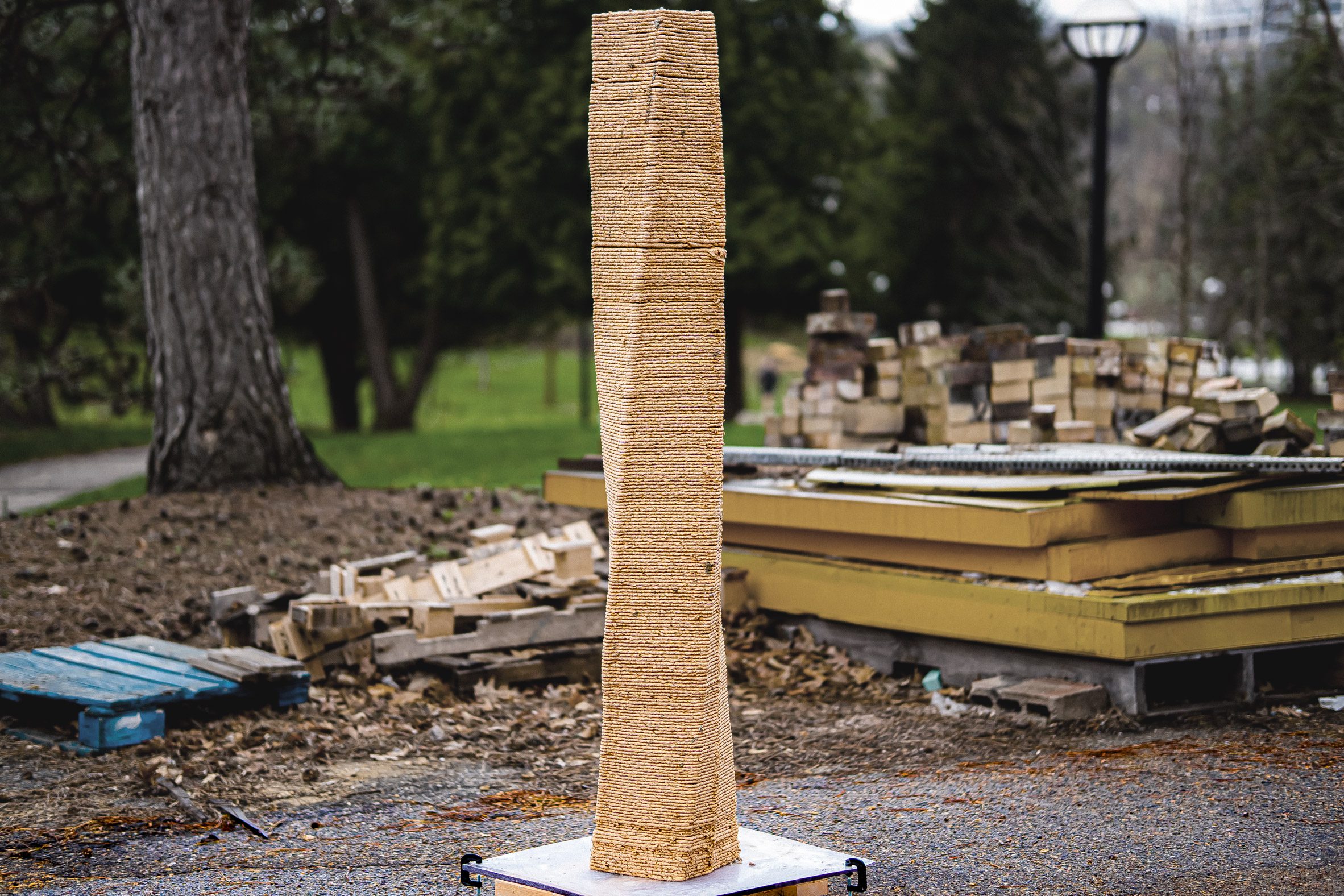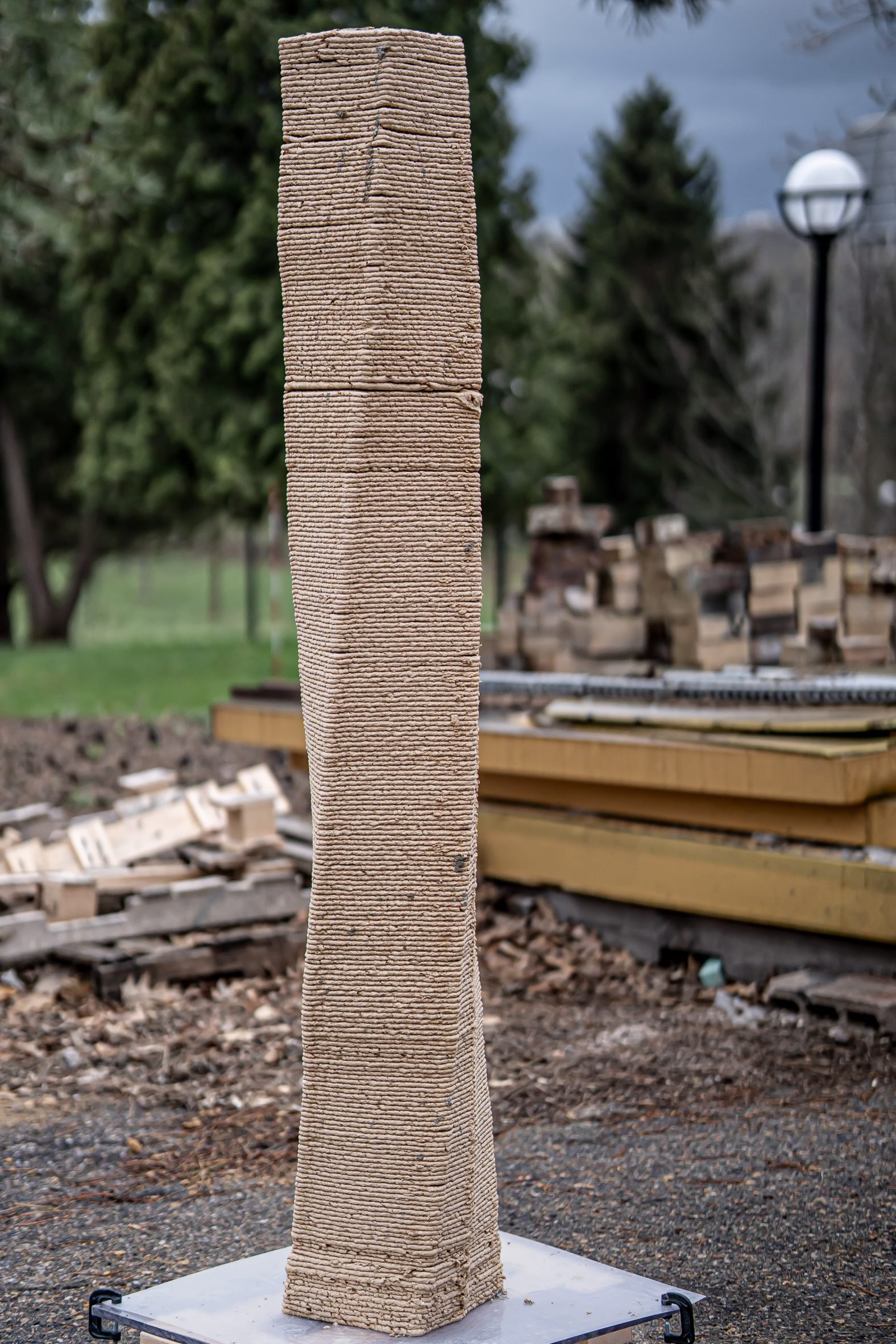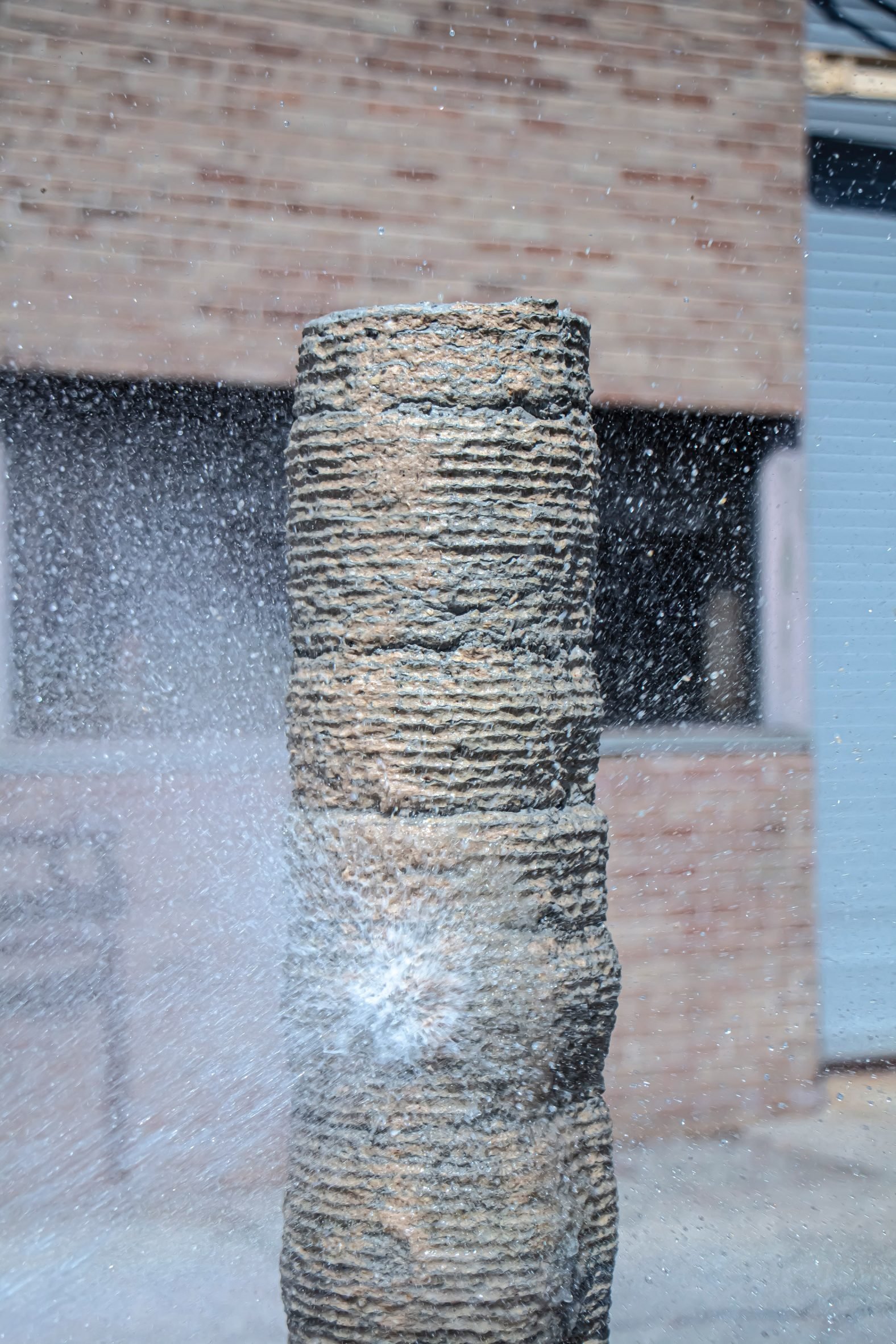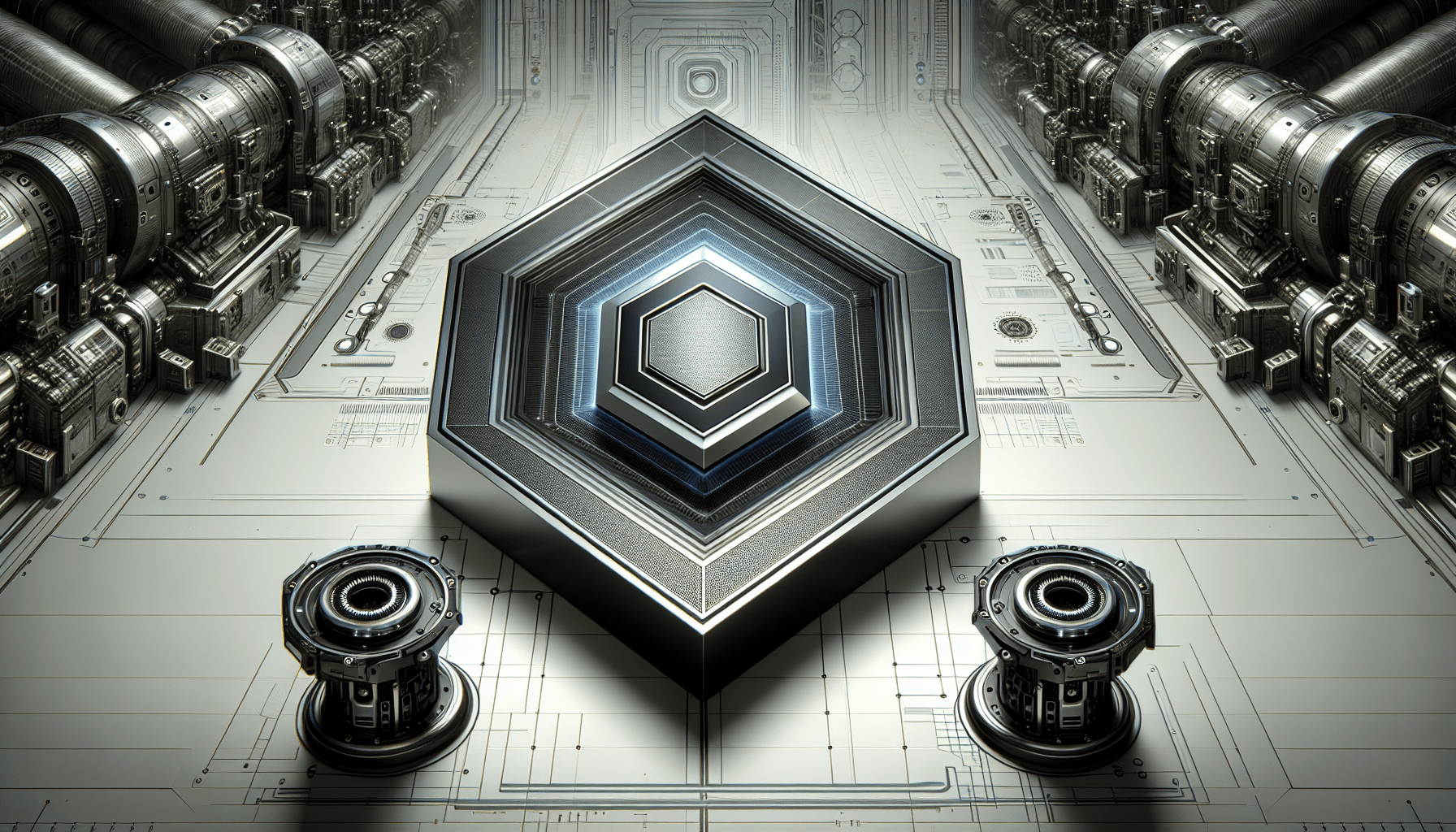Creality K1 SE 3D Printer, with 600 mm/s Printing Speed CoreXY Auto Leveling and Z-Offset, 300℃ Dual-Gear Direct Extruder Full Metal Die Cast Solid Frame Printing Size 8.66x8.66x9.84 inch
$279.00 (as of June 18, 2025 23:32 GMT +00:00 - More infoProduct prices and availability are accurate as of the date/time indicated and are subject to change. Any price and availability information displayed on [relevant Amazon Site(s), as applicable] at the time of purchase will apply to the purchase of this product.)The University of Michigan’s DART Lab has developed a groundbreaking solution to the wood waste generated in concrete construction. Using sawdust as the main ingredient, the research team created a biodegradable formwork material that can be used in place of traditional wood-based molds for pouring concrete. By mixing sawdust with biopolymers and additives, the team produced a material that can be molded or 3D-printed into various shapes. They successfully used the material to create a 1.8-meter structural column, demonstrating its potential for large-scale applications. The environmentally-friendly material is not only a sustainable solution to wood waste, but it can also be recycled and reused multiple times. This innovative development by the University of Michigan’s DART Lab opens up new possibilities for reducing waste in the concrete industry and creating a more sustainable built environment.

Research Team at University of Michigan
Introduction to the DART Lab
The research team at the University of Michigan is part of the Digital Architecture Research and Technologies (DART) Lab at Taubman College of Architecture and Urban Planning. Led by DART director Mania Aghaei Meibodi, along with researchers Muhammad Dayyem Khan, Tharanesh Varadharajan, and Zachary Keller, the team focuses on developing innovative solutions for sustainable construction practices.
Objective of the research
The objective of the research conducted by the team at the University of Michigan is to address the issue of wood waste in the process of laying concrete. The team aims to create biodegradable formwork using sawdust, with the goal of reducing the environmental impact of construction activities and promoting the reuse of industrial byproducts.
Creating Biodegradable Concrete Casts
The use of sawdust in formwork
As a sustainable alternative to traditional formwork materials, the team at the University of Michigan utilizes sawdust in the creation of biodegradable concrete casts. By repurposing sawdust, which is typically discarded or burned, the team aims to mitigate the environmental impact of wood waste in the construction industry.
BioMatters project by DART Lab
The sawdust-based material is a result of the BioMatters project carried out by the DART Lab. This project focuses on exploring the potential of biopolymers and additives mixed with sawdust to create a versatile material that can be used for formwork and other construction applications.
Mixing sawdust with biopolymers and additives
The research team combines sawdust with biopolymers and additives to create their biodegradable material. This mixture enhances the properties of sawdust, making it suitable for different construction processes. By experimenting with different ratios and types of additives, the team is able to tailor the material to specific applications, ensuring optimal performance and longevity.

Moulding and 3D Printing Capabilities
Material can be moulded into various shapes
One of the advantages of the biodegradable material developed by the research team is its ability to be moulded into various shapes. This flexibility allows for greater freedom in design and construction, enabling the creation of complex and customized structures. The material can be easily shaped and formed to meet specific project requirements.
Material can be 3D-printed
In addition to moulding, the material can also be 3D-printed. This opens up new possibilities for construction, as it allows for the creation of intricate and precise structures. By utilizing 3D printing technology, the research team at the University of Michigan is able to optimize the use of the material, reduce waste, and expedite the construction process.
Concrete formwork created using the material
To demonstrate the capabilities of the biodegradable material, the research team used it to create concrete formwork. By pouring concrete into the formwork and allowing it to dry, the team was able to create structural columns. Once the concrete was fully cured, the sawdust formwork could be peeled off, revealing the finished concrete column.
Reusability and Recycling of Material
Peeling off sawdust formwork reveals concrete column
After the concrete is dry, the sawdust formwork can be easily peeled off, exposing the complete concrete column. This process eliminates the need for traditional formwork removal methods, which are often time-consuming and require additional resources.
Material saved and recycled for further use
The biodegradable material created by the research team is not discarded once the formwork is removed. Instead, it is saved and recycled for further use. By adding water to the material, the viscosity level can be recreated, allowing it to be reused multiple times. This recycling process helps reduce waste and promotes a more sustainable approach to construction.
Process of adding water to recreate viscosity level
To regenerate the material for reuse, water is added to restore the desired viscosity level. This process ensures that the material retains its original properties and can be used for future construction projects. By adding water, the research team can effectively extend the lifespan of the material, maximizing its potential and minimizing waste.

Environmental Impact of Sawdust
Amount of trees cut down annually
The research team at the University of Michigan recognizes the significant environmental impact caused by the cutting down of trees. It is estimated that 15 billion trees are cut down worldwide each year. This alarming number highlights the urgent need for sustainable solutions in the construction industry.
Sawdust dumped into landfills
In addition to trees being cut down, the disposal of sawdust is another environmental concern. In the United States alone, approximately three million pounds of sawdust are dumped into landfills annually. This waste not only takes up valuable landfill space but also contributes to the overall environmental impact of the construction industry.
Potential for environmental pollution when burned
Sawdust is often burned as an alternative to disposal, but this practice can lead to environmental pollution. The combustion of sawdust releases harmful emissions, including carbon dioxide and other greenhouse gases. By finding alternative uses for sawdust, such as creating biodegradable formwork, the research team aims to reduce the negative environmental consequences associated with its disposal and burning.
Future Experiments and Applications
Experimenting with larger structures
The research team at the University of Michigan plans to continue experimenting with the biodegradable material and its application in larger structures. By scaling up their experiments, the team aims to demonstrate the feasibility and practicality of using the material in a wide range of construction projects. This further exploration will help to refine the material and uncover its full potential.
Rotating structures to create bigger designs
In addition to scaling up their experiments, the team also envisions the possibility of rotating structures to create even bigger designs. By rotating 3D-printed components, structures can be assembled in a modular manner, allowing for the construction of larger and more complex architectural elements. This innovative approach offers opportunities for creative and sustainable construction practices.
Potential applications beyond concrete construction
While the initial focus of the research team has been on concrete construction, they recognize the potential for the biodegradable material to be used in a wide range of applications beyond just concrete. The material can be used in small decorative items, furniture, walls, doors, and windows. Its versatility opens up possibilities for innovative and sustainable design solutions.

Sanded and Stained Finish
Surface treatment options for the material
The biodegradable material developed by the research team at the University of Michigan can be sanded and stained, similar to wood. This surface treatment option allows for the creation of a smoother finish, enhancing the aesthetic appeal of the material. By providing surface treatment options, the team ensures that the material can be customized and tailored to meet specific design requirements.
Comparison to wood finishing techniques
The ability to sand and stain the biodegradable material makes it comparable to traditional wood finishing techniques. It offers a sustainable alternative to wood while maintaining the visual and tactile qualities associated with natural wood. This comparison highlights the potential of the material to replace wood in various construction and design applications.
Exploring Different Wood Types
Determining the best woods for the material
To optimize the performance and durability of the biodegradable material, the research team is exploring different wood types. By testing the material with various woods, the team can determine which types provide the best results in terms of strength, stability, and longevity. This research will help ensure that the material meets the necessary standards for construction applications.
Testing performance and durability
In addition to examining different wood types, the research team is conducting tests to assess the performance and durability of the biodegradable material. By subjecting the material to various stressors, such as moisture, temperature changes, and load-bearing capacity, the team can evaluate its ability to withstand real-world construction conditions. This testing process ensures that the material meets industry standards and can be relied upon for long-lasting structures.

Other Projects Utilizing Sawdust
Oh Geon’s blocky stool design
Designer Oh Geon has utilized sawdust to create a blocky stool. This innovative use of sawdust showcases its potential as a sustainable and versatile material in design and furniture production. By repurposing sawdust, designers like Oh Geon are contributing to the reduction of wood waste and promoting the circular economy.
Mater Design’s Conscious Chair
Mater Design has also utilized sawdust in the re-released version of the Conscious Chair. This forward-thinking design combines sustainable materials, including sawdust, with contemporary aesthetics, demonstrating the potential for sawdust to be incorporated into high-end furniture production. These projects highlight the growing interest in sustainable and eco-friendly materials in the design industry.
Conclusion
The research team at the University of Michigan, through their BioMatters project, has made significant progress in creating biodegradable concrete casts using sawdust. By repurposing sawdust and combining it with biopolymers and additives, the team has developed a versatile material that can be used for formwork and other construction applications. The material’s moulding and 3D printing capabilities, along with its reusability and recycling potential, demonstrate its viability as a sustainable alternative to traditional formwork materials. The research team plans to continue experimenting with the material, exploring larger structures and expanding its applications beyond concrete construction. With its sanded and stained finish options, as well as its compatibility with different wood types, the material offers both aesthetic appeal and performance. The utilization of sawdust in other design projects further showcases its versatility and potential for reducing wood waste. The achievements of the research team at the University of Michigan signify a promising future for sustainable construction practices and the use of biodegradable materials in the industry.










